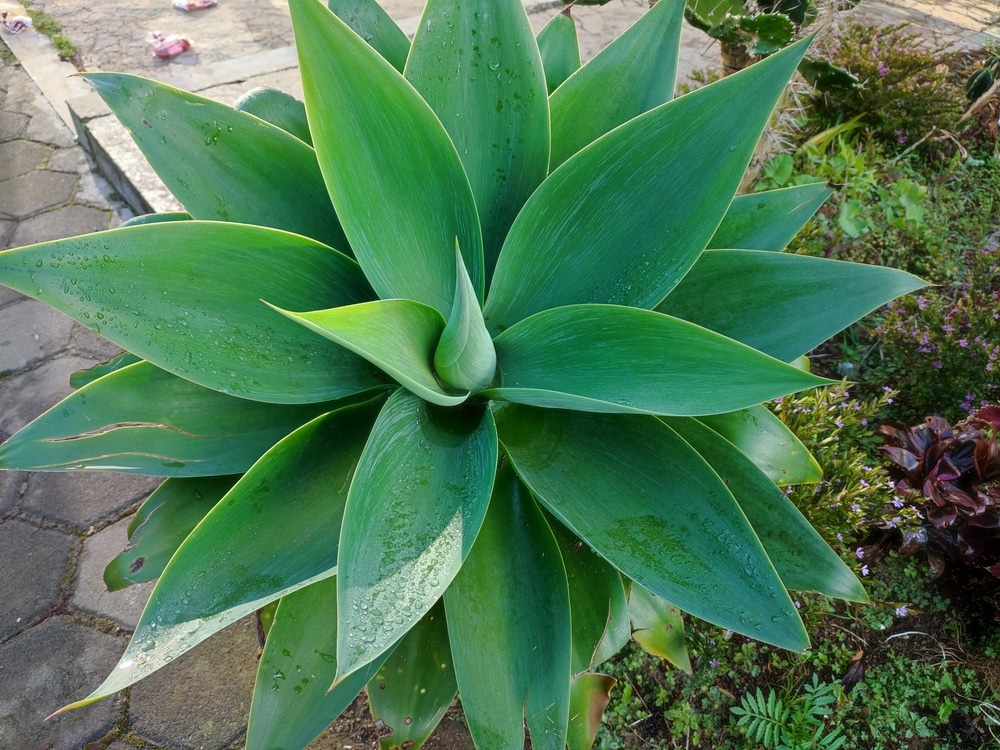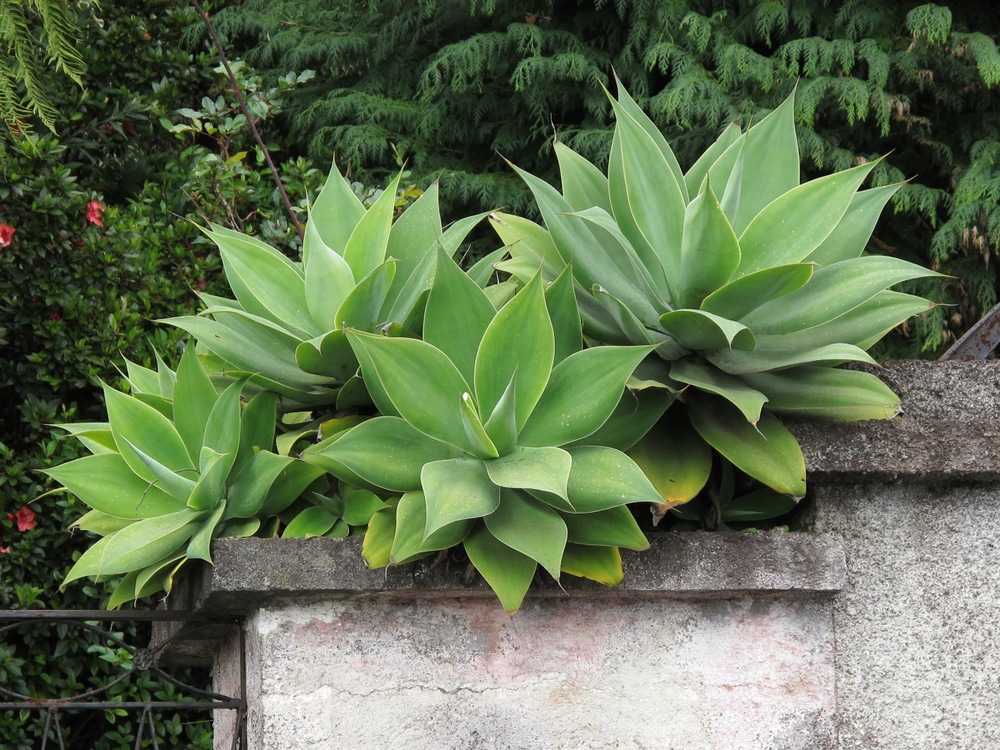Foxtail agave, or Agave attenuata, is a succulent belonging to the Asparagaceae family (the asparagus family) and Agave genus. As a Mexican native plant, it grows best in hot regions and doesn’t need a lot of water to thrive.
| Botanical Name | Agave attenuata |
| Common Name | Foxtail agave, dragon tail, or elephant’s trunk |
| Plant Type | Perennial |
| Flower Color | Greenish-yellow |
| Size When Mature | Up to 60 inches tall and 96 inches wide |
| Bloom Time | Summer |
| USDA Hardiness Zones | 9-12 (USDA) |
| Sun Requirements | Full sun, partial shade |
| Soil PH Range | 6.6-6.8 |
| Soil Type | Loamy, sandy, and well-drained |
| Water Needs | Low |
| Native Area | Central Mexico |
What You Need To Know About Foxtail Agave
Although foxtail agave comes from Mexico, you can find this easy-to-care-for plant in gardens worldwide. It’s a succulent plant that grows in fleshy rosette leaves. In summer, it produces yellowish-green flowers that bloom for 3-4 months.
It’s important to note that the foxtail agave plant can be toxic to pets. If your cat or dog ingests the leaves’ sap, it can irritate their mouth, gut, and digestive system. So, keep it away from pets if you bring it inside.
How To Care for Foxtail Agave
Here’s everything you need to know about growing and caring for a thriving foxtail agave.
Light
If you choose to plant foxtail agave outside, place it in a partially shaded area. That said, it does well with direct sunlight for part of the day. You’ll need to bring your plant indoors in climates with cold winters.
Place the foxtail agave plant in a south or southeast window. If you do not have a window that receives enough sun, get a grow light to help supplement.
Water and Soil Needs
Like most cacti and succulents, the foxtail agave plant is drought-tolerant and has low water needs. In summer, water your plant once every week or so when the top 2-3 inches of soil is dry. In the winter, you can fall back 2-3 times per month.
Water the soil thoroughly, allowing the water to drain completely. It’s crucial to use succulent or cacti soil that’s well-drained. If this plant sits in too much water, it can cause root rot. Opt for a mildly acidic to a neutral pH that’s loamy or sandy.
Also, ensure that your pot has drainage holes to release excess water.
Temperature Requirements
Foxtail agave cannot tolerate freezing temperatures, so avoid planting outdoors if the temperature drops below 50 degrees. They grow best in USDA hardiness zones 8-10, though they can happily live in 9-12 zones.
Fertilizer
You don’t need to add fertilizer for the foxtail agave often, though you can add a diluted fertilizer once yearly. While it gets most of its nutrients from the soil, fertilizer in the growing season can help speed up its growth and promote blooming. However, over-fertilizing can be fatal for your plant.
Common Diseases
Luckily, agave plants are typically safe from most diseases and pests. The biggest disease issue for this plant is overwatering, which can lead to root rot.
Foxtail Agave Propagation
The best way to propagate foxtail agave is by separating pups, though you can also use seeds.
Pups or Offsets
For propagation through pups or offsets, you can follow the following steps.
- Gently tug pups from the mother plant, ensuring you get the entirety of its roots/
- Place the pup in some shade for a few days to allow it to form a callous.
- Fill a small pot with a succulent soil mix.
- Place in an area with plenty of sunlight and water when the soil is dry.
Seeds
You can follow these steps for growing the plant from seeds.
- After blooming, the foxtail agave plant will produce fruits with seeds.
- Sow the plant seeds in a pot with succulent soil mix.
- Lightly water and cover the pot with plastic wrap.
- Place the pot in a warm, sunny area.
- Take the plastic off once the seedlings sprout.
There are many other varieties of agave including the agave blue flame, which has beautiful bluish-green leaves.


